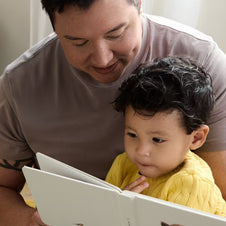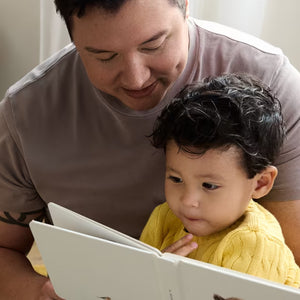I love a snuggly, sweet contact nap. But, I also know that it can feel tough when contact naps are the only way your baby will nap well. Let’s talk all about contact naps: what exactly contact naps are, how contact naps can benefit babies, how to make sure contact naps are safe, and how to stop contact naps when you’re ready.
Taking Cara Babies Classes
What are contact naps?
Have you ever snuggled or held your baby for a nap? Has your baby fallen asleep on you while in a carrier? These are contact naps! Any nap when your baby is napping on or up against your body is a contact nap.
What are some benefits of contact naps?
Aside from being a way to enjoy extra snuggles, contact naps have quite a few benefits for you and your baby. Research(1) shows that the physical closeness that occurs during a contact nap can:
-
Calm both you and your baby
-
Add to the bond between you and your baby
-
Help you learn your baby’s cues
-
Promote the release of oxytocin (a hormone(2) associated with positive attachment and reducing stress)
Are contact naps safe?
They can be. Your little one’s safety is always the priority.
For safe contact naps:
-
Remain awake at all times when holding or wearing your baby for a nap.
-
Be sure you can see your baby at all times.
-
Follow appropriate safety guidelines if you’re babywearing.
Safety Tip: If possible, have someone check in on you and your baby periodically during a contact nap to be sure you haven’t dozed off while snuggling your baby. You may be surprised how easy it can be to nod off, especially if you haven’t been getting much sleep.
Do you recommend babywearing for contact naps?
Babywearing for an occasional contact nap can be a great way to get things done around the house or get some fresh air if your baby is fighting a nap (especially in the late afternoon). Be sure to follow manufacturer and safety guidelines when babywearing.
Important Note: The AAP(3) does not recommend the use of infant carriers or infant slings (ie. babywearing) for routine sleep.
When do babies outgrow contact naps?
There isn’t a universal answer to this. Some babies do reach an age where they simply want to be laid down for sleep; these babies sleep better when they’re able to get into a comfortable position in their crib. On the other hand, some babies-- and even toddlers-- are very snuggly. They don’t ever seem to naturally “outgrow” the contact nap.
No matter how much your baby enjoys contact naps, they aren’t always practical or possible. If you’re looking to find a balance between contact naps and independent naps, I have classes that will help, whether you have a newborn (0-4 months), a baby (5-24 months), or even a toddler (2-4 years).
How do I stop contact naps?
If you’re ready for your baby to stop taking contact naps (or at least, stop requiring contact naps all day every day), here are my tips:
1. Set up the room for sleep success.
The first step to preparing your baby for naps in the crib or bassinet is to be sure to create a safe and healthy napping environment.
Here’s what I recommend for making a room conducive to sleep:
-
Check for safety. Be sure your baby’s sleep surface is labeled as a crib, bassinet, portable crib, or play yard. Check that it’s firm, flat, and free of any loose objects or bedding. My Safe Sleep Checklist covers everything you need to know about safe sleep in the crib.
-
Darken the room. This can be especially helpful for babies beginning around 10-12 weeks as this is when little ones start becoming more aware of the world around them. Making the room dark (use code Cara for 10% off) helps minimize stimulation and tells your baby’s brain it’s time for sleep.
-
Use a sound machine. Babies are used to hearing a constant sound in the womb, so silence is not actually helpful for baby sleep. A sound machine (use code CARA20 for 20% off) can also block extraneous noise, especially if there are sudden loud noises in the house during the day (like siblings, pets, doorbells, etc.) that may wake your baby during a nap.
-
Check for comfort. You’ll want the room to be cool. Being too hot or too cold can make it harder for a baby to sleep. Dress your baby comfortably for sleep then assess your baby and adjust accordingly.
2. Aim for age-appropriate wake windows.
A wake window is simply the amount of time between one nap and the next, starting when you pick your baby up and ending when you lay them back down in their crib. If a baby’s wake window is too long before a nap, they may be overtired heading into the nap, which can make it more difficult to fall asleep and stay asleep. On the other hand, if a baby’s wake window is too short before a nap, they may not be tired enough to fall asleep or stay asleep during a nap. Following age-appropriate wake windows will help fill your baby’s tired tank™ and make a restful nap more likely.
3. Practice (and keep practicing).
After you’ve set up a safe sleep space and you’re ready to lay your baby down in a crib or bassinet for a nap, go for it! I want you to go at the pace that works best for you and your baby.
Here are some tips for practicing naps in the crib or bassinet:
-
Aim for 1-2 naps in the crib or bassinet each day.
-
Try to lay your baby down awake. If your baby falls asleep during the nap routine, it can be harder for them to stay asleep and take a good nap.
-
Know that any amount of sleep in the crib or bassinet is a win. As your baby becomes more accustomed to sleeping out of your arms, those naps will get longer. In the meantime, it’s ok to try to extend a nap if your baby wakes after a short nap.
-
Stay consistent. Keep in mind, if contact naps are all your baby knows, moving to independent naps will feel like a big transition.
If you’ve been practicing independent naps and it feels like you’re not making any progress, my class Conquering Naps can help. I’ll teach you everything you need to help your baby to fall asleep independently for naps and transition between those sleep cycles while still allowing you to have those snuggly contact naps when you want them.
4. Conquer night sleep (if you haven’t already).
Night sleep is usually consolidated before naps. If your baby isn’t sleeping well at night, we likely need to start there. Once nighttime sleep solidifies, many parents find that naps improve as well.
If you need a plan for night sleep, my classes are here to help. For babies 4 months and younger, my Newborn Sleep Bundle will help you lay a healthy sleep foundation with no crying involved. For babies 5 months and older, The 5–24 Month Collection is a fully customizable and emotionally-connected sleep training plan that will help you establish consolidated night sleep. And for those toddlers 2-4 years, my Toddler Sleep Training class will teach you developmentally-appropriate strategies for independent nights.










